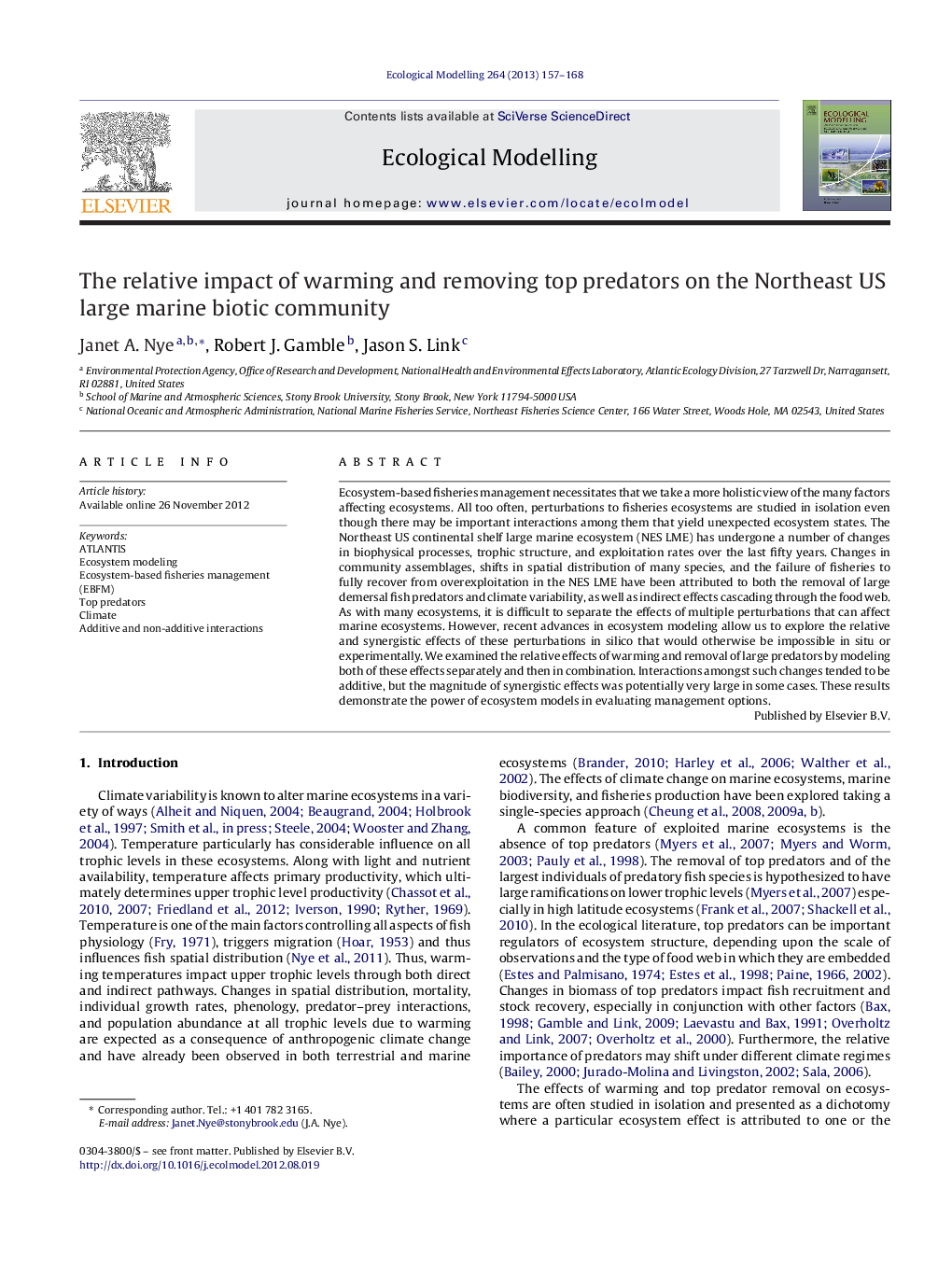| کد مقاله | کد نشریه | سال انتشار | مقاله انگلیسی | نسخه تمام متن |
|---|---|---|---|---|
| 4376093 | 1617482 | 2013 | 12 صفحه PDF | دانلود رایگان |

Ecosystem-based fisheries management necessitates that we take a more holistic view of the many factors affecting ecosystems. All too often, perturbations to fisheries ecosystems are studied in isolation even though there may be important interactions among them that yield unexpected ecosystem states. The Northeast US continental shelf large marine ecosystem (NES LME) has undergone a number of changes in biophysical processes, trophic structure, and exploitation rates over the last fifty years. Changes in community assemblages, shifts in spatial distribution of many species, and the failure of fisheries to fully recover from overexploitation in the NES LME have been attributed to both the removal of large demersal fish predators and climate variability, as well as indirect effects cascading through the food web. As with many ecosystems, it is difficult to separate the effects of multiple perturbations that can affect marine ecosystems. However, recent advances in ecosystem modeling allow us to explore the relative and synergistic effects of these perturbations in silico that would otherwise be impossible in situ or experimentally. We examined the relative effects of warming and removal of large predators by modeling both of these effects separately and then in combination. Interactions amongst such changes tended to be additive, but the magnitude of synergistic effects was potentially very large in some cases. These results demonstrate the power of ecosystem models in evaluating management options.
► Warming affected lower trophic levels and macroinvertebrates much more than upper trophic levels.
► Removing top predators had little to no effect on plankton or invertebrate functional groups.
► Removal of top predators had a much larger effect on the pelagic:demersal (P:D) ratio than warming.
► The combined effect of warming and removal of top predators was additive in majority of the cases.
► When these two perturbations were modeled simultaneously synergisms and antagonisms occurred rarely.
Journal: Ecological Modelling - Volume 264, 24 August 2013, Pages 157–168